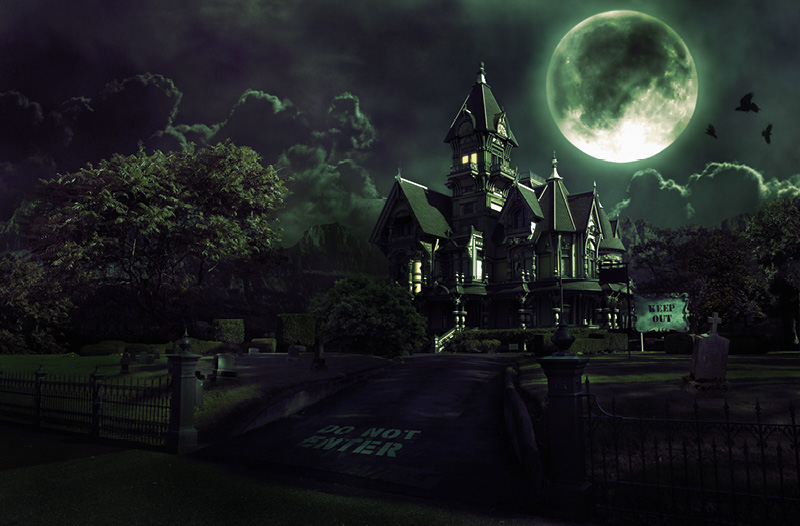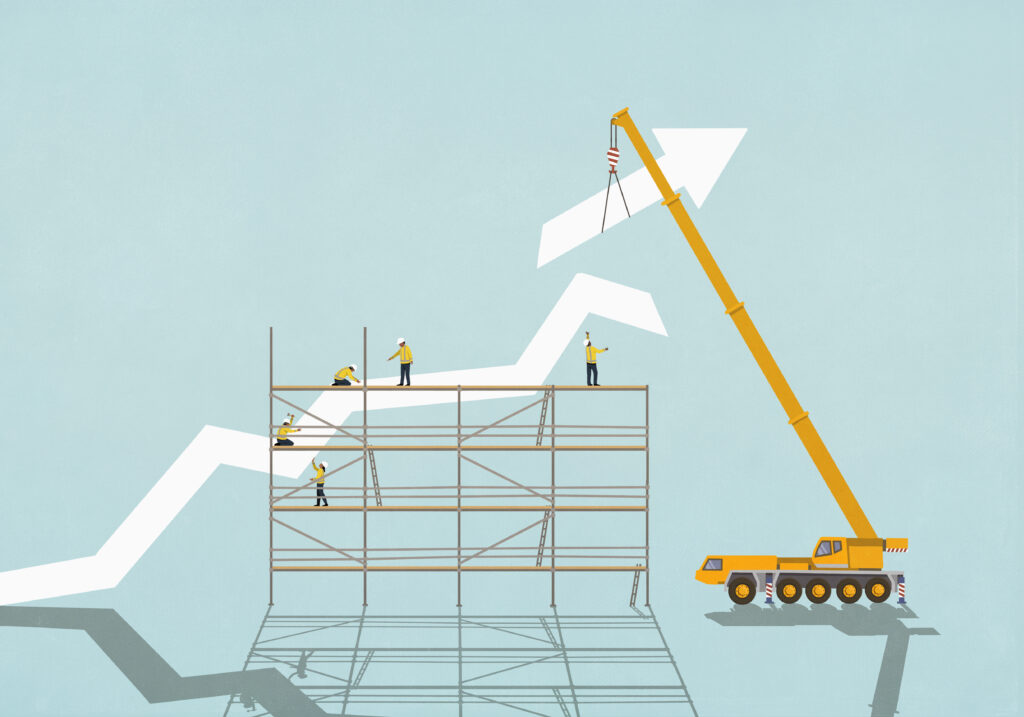
Covering Creepiness

The biggest scare at your local haunted house attraction might be the ax-wielding maniac who bursts out of a darkened hallway.
For the operator of that business, the biggest scare might be the customer who trips while fleeing that maniac or maybe chooses fight over flight. So, yes, haunted houses need insurance. For the Leader’s Edge podcast, market analyst and podcast producer Zach Ewell spoke with people who love and work at scare attractions and people who insure them. Here are their stories.
The following has been edited for concision and clarity.
Every October, millions of Americans flock to haunted house attractions, or haunts as they are also called, to be entertained. From theme parks to mom-and-pop haunts, over 1,200 open their doors to guests every year, according to the organization America Haunts.
However, not all haunts are created equal. From paintball hayrides to zombie barges and everything in-between, a lot of work and time is spent on crafting these experiences. To give you some stats: The industry generates $500 million in ticket sales per year, an average haunt has about 8,000 guests lining up to pay, and some locations employ dozens of scare actors working on site. When it comes to this business, the risks, just like the devil, are in the details.
Back in 2018, Aaron Ruacho was working early mornings up until the afternoon at Phoenix, Arizona’s international airport as a supervisor. To fill his afternoons in the fall, Ruacho decided to try out as a scare actor at a local Arizona haunt. After his audition, he got the job. He would go on to work at an Area 51-inspired haunt for the remainder of the Halloween season.
AARON RUACHO: So essentially, the haunt that I was working was an Area 51 alien invasion theme. The character that I played was essentially just a scientist that had been infected with some sort of alien disease, and it had taken over his brain and had affected him so he’s violent and dangerous. He [the makeup artist] gave me boils and stuff all over my face and green makeup.
I was wearing a lab coat, and I would just kind of stand around and scream at people and chase people around and stuff. It starts out, we had an army guy. He just tells you, “OK, we’re going to have you go through this bunker. Go through, get as fast as you can, get out safely.” So he opens up the door, and then there’s people jumping out at you here and there, mostly just patients wearing hospital gowns. Or scientists.
And so you go a little bit further, there’s a bridge that goes down and then you see an actual spaceship on the floor. And then we have a couple aliens and people with full face masks. And they jump out at you as well.
And there’s also an animatronic. There’s a big hole in the wall and a little animatronic that shoots through the wall and reaches out at you. With more people jumping out at you here and there, and then [it] pops you out, you go around the corner, and then that’s where you exit.
Kyle Teeples started the amusement division at OVD Insurance and now has over a decade of experience in this space, including offering policies for haunted house attractions. He was the right person to discuss the risks that these pop-up frights must consider.
KYLE TEEPLES: The main thing when you think of haunted houses or mazes or whatever the case is, it’s going to be dimly lit, probably even some places pitch black. It’s always what’s around the next corner. And so there’s a lot of movement inside these spaces [and] people are not aware of necessarily their surroundings. So they round the corner quickly because they’re running away from something, and there’s an elevation change, or a step, or just a ramp, or whatever the case is. Or maybe there’s an obstacle sitting there.
And so all of those things are big risks that are part of it. It is a variety of policies that can be opened up. The most basic one would be general liability and workers compensation when you can get it. But then you can go as far in this depth of employee practice liability, sexual abuse and molestation, assault and battery, all of the nuances that can come up from this as well. Along with the property and the marine and all of the physical structures and everything else there as well.
I wish I could say it’s as easy as a manufacturing facility, where you just have product liability for the most part. But, in particular, there are lots of stepping over mazes, going through spaces where so many people can trip and fall and get injured. The first and foremost concern [is] how do you make this so that anybody that’s participating is not going to get injured? But then also, what about my employees? How do we make it so that they’re not going to get injured?
Workers compensation covers your employees if they get injured. And it can go as far as also when you have 1099 employees, if they are not having their own individual policy for themselves, technically they’re being contracted underneath you, so they would fall under workers compensation. That would cover all medical along with lost wages for the workers’ side of things.
The other thing that you really need to protect yourself is when a customer goes through the set, and maybe they become belligerent somehow because they get scared, and maybe they swing and throw a punch or something like that.
Physical contact, intentional or not, comes with the business.
RUACHO: In terms of people, customers, being physical, yeah, absolutely, that does happen. Quite a bit.
I never got anything bad. The worst that happened to me was, I mean, I have long hair. People would generally just touch it quite a bit. So that happened to a lot of people. I think they just have some sort of idea that they can do whatever they want to you.
I had a lot of people threaten to hit me. We did have one guy, a friend of mine, who was in a full alien mask, [he] got punched in the face. I think he wasn’t wearing his glasses, but they fell out. And then somebody else stepped on him on accident. So he broke his glasses.
It happens here and there, people get physical.
There was another girl who was next to me. She was right before me. There’s a hallway that she’s in the beginning of, and then I’m around the corner. So I can kind of jump out at people from that corner. I don’t remember what exactly happened to her. I think she had maybe some sort of a preexisting condition. I don’t know, maybe it was epilepsy. I think she had a seizure, the actress did. There are a bunch of exit doors, emergency exit doors you can go in and out of. So the two leaders scooped her up, took her out, and then just took her out the back way.
Did anyone or fellow staff members receive workers compensation or insurance in case they got hurt?
RUACHO: I believe so, I don’t remember exactly. The only physical injury that I remember somebody having was, as I said, a friend of mine got punched in the alien mask. I know he continued to work there the rest of the season.
We have a sort of system in case anything happens, like somebody touches you or punches you or whatever. If that happens, you go to the person either ahead of you or behind you, you let them know, and then they go and do the same. And then it kind of goes down the chain until it gets to one of the leaders. And then they make sure that individual is kicked out when they leave the haunt.
Injuries to scare actors and haunted house visitors are not uncommon. This means operators must think long and hard about their insurance needs.
TEEPLES: You gotta think a lot of people just say, oh, I can set up a haunted maze or I can set up a haunted thing in our pole barn or in this little area because we have a cool farm or something along those lines. And they’re not necessarily thinking about the insurance side of things.
A lot of people don’t have the insurance or the foresight to be thinking towards that. And then when they actually go out to, “Hey go get me a quote.” Well, there’s only a handful of carriers that are actually willing to represent them because of the exposure that they actually have.
And so, to go to just any old insurance company, most likely they don’t have an arm of their business for amusement purposes. And so they don’t know those markets. And so when they go and call up their standard markets, they’re going to say, no, we don’t do that. And then when they go to a lot of the brokers, they’re getting these massive numbers for insurance. And they’re like, well, that’s just too expensive. I’m not even going to afford that. So I’m just going to, quote, self-insure in a way.
Finding an insurance agency that specializes in this area of expertise is really important. Because we have a handful of carriers that we can go to that, and the territory of the country that they actually live in will change what markets are available or what the cost would be.
I’ve heard a lot of situations of people that they are, “OK, we’re going to have this haunted attraction. And, oh well, it might not be conducive for little kids. So what do we do for the little kids? Well, let’s just have some bounce houses around here so they can jump on that.” Well, a lot of general liability policies that would even do just a haunt, they exclude the bounce houses. So then if a little kid gets injured over there, which you do hear about that, well, then they have an exclusion for that. And they’re [the owners] like, well, I thought I had coverage. And inflatables is a very common thing to be excluded.
Offsetting the risk is the potential profit to be derived from a haunted house attraction. According to America Haunts, the median ticket price per event costs $15 per person, with some haunts costing as much as $45 to $75 per person.
TEEPLES: I think with just population growing in general and people trying to be more creative on how to earn money, there’s a lot of, I’ll call them “mom and pops” that are saying, hey, let’s put this on our farm and things like that. So I would say the space has certainly grown.
The entire amusement space in general has grown exponentially. It’s a really great return on investment in these spaces because it doesn’t take too much. Once you turn off the light, people get scared pretty easily in a lot of ways. So there’s not a huge investment on the front end to start getting the rewards on the investment income.
It’s fun to make people scared and all of that, but also be conscious of the exposure that you’re creating for yourself. When you’re doing your waivers and people signing, make sure you’re also asking and having them acknowledge if they have any preexisting conditions before they go through something. Because, who knows, like, you don’t want to get in a situation that someone has a history of heart [arrhythmias] or seizures because of epilepsy or anything like that.
You should be aware of that. Or if they recently had broken or messed up their knee or something, they shouldn’t be going through these.
While his scare actor days are behind him, Aaron Ruacho knows what theme he would pick if he ever had the chance to design his own haunt.
RUACHO: One of the things that initially got me into horror when I was a kid was watching The Texas Chain Saw Massacre way too early. I love it. It’s kept with me my entire life. I have a Leatherface tattoo, and I’ve always loved that kind of aesthetic of the rural countryside with this crazed maniac chasing you around with a chainsaw.




